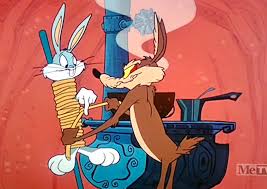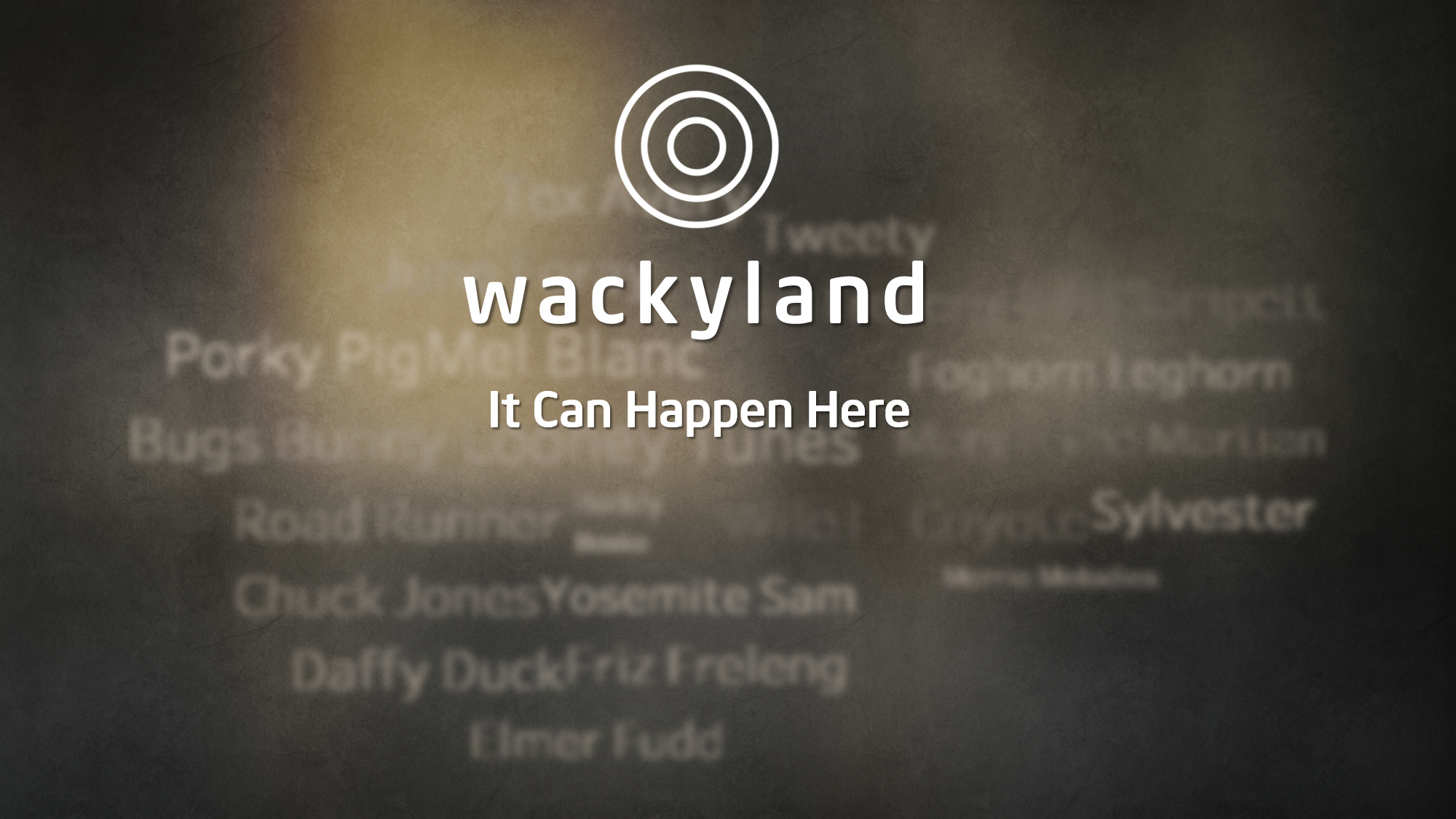“You are game, aren’t you?”

Directed by Chuck Jones; Co-Director: Maurice Noble; Story by Dave Detiege; Animation by Ken Harris, Richard Thompson, Bob Bransford, and Tom Ray; Assistant Layout: Corny Cole; (Great name.) Backgrounds by Philip DeGuard and William Butler; Effects Animation by Harry Love; Film Editor: Treg Brown; Voice Characterization by Mel Blanc; Musical Direction by Milt Franklyn. A Merrie Melody released on July 29, 1961.
Wile E.’s latest scheme has him leaving a phone in front of Bugs’s hole and giving him a call. Wile E. states that he is the new neighbor, and could really use a cup of carrots for a stew he’s making. Ever the agreeable sort, Bugs complies. Of course, upon knocking on the door, Wile E. grabs him and ties him up. Ever the unflappable sort, Bugs doesn’t worry at all. He goes as far as to hold down the rope so Wile E. can tie a bow, and uses his ears to flavor the broth.
Still, his kindness has its limits, and he has to decline a stay for lunch. Wile E. isn’t letting him go, so Bugs hops in place and gets one of Wile E.’s wine bottles to pop its cork into his eye. (Genius that he is, I’m guessing Wile E. is an expert winemaker.) Wile E. ducks the next one, but who do you think taught Basil of Baker St. everything he knows? Bugs knew the cork would bounce around the kitchen, setting off a chain reaction that would ultimately cause Wile E’s fold-out bed to fall on him. Done with hopping corks, Bugs hops home.
Wile E. tries to vacuum up his prey, but gets a decoy made out of bombs, instead. Keeping in character, he’s not even mad. He’s admires Bugs’s chutzpah. Still, dinner plans must be kept, and the cunning canine next pours quick drying cement into the hole. Bugs molded it into a pillar, and sticks it back in Wile E.’s path. Both of them making puns about the situation. (These guys. These are the guys I want to be like when I mature.) Time for our finishing gag. And it’s a great one!
Wile E. gets his paws on a ten-billion volt magnet, several dynamos, and an iron carrot. If he can get Bugs to eat that, then the multiverse’s most powerful magnet will reel him in like a dead pike. Bugs just pretends to eat the carrot because he’s not a neanderthal this time. Wile E. falls for it, because even the biggest geniuses can be fooled. He turns on the device and starts attracting the carrot, and Bug’s mailbox, iron, pans, etc.
Then the gag grows to Tex Avery levels! Horseshoes, barbed wire, cars, Eiffel towers… If it’s metal, it’s migrating. And in true Avery fashion, the gag can still go farther. Satellites and rockets are also pulled in. All that metal, and rocket fluid. Something’s going to give! Bugs admires the fireworks that the camera doesn’t show us. (*humph*) You know, Russia may have beat us to putting dogs in orbit, but as Bugs points out, who put the first coyote up there? That’s right: U.S. (Hope you enjoyed hearing Wile E. speak. Barring a failed television pilot, he wouldn’t talk again for decades.)
Favorite Part: As perfect as the ending was, my favorite part is the look Bugs gives up when he sees Wile E.’s mailbox labeling him as a genius. Bugs is NOT amused. Even goes so far as to mock him. (“Are you in, genius?”)
Personal Rating: 4. This was a whole point better than the last team-up of these two. So glad to hear Bugs act like the full-grown bunny he is.




